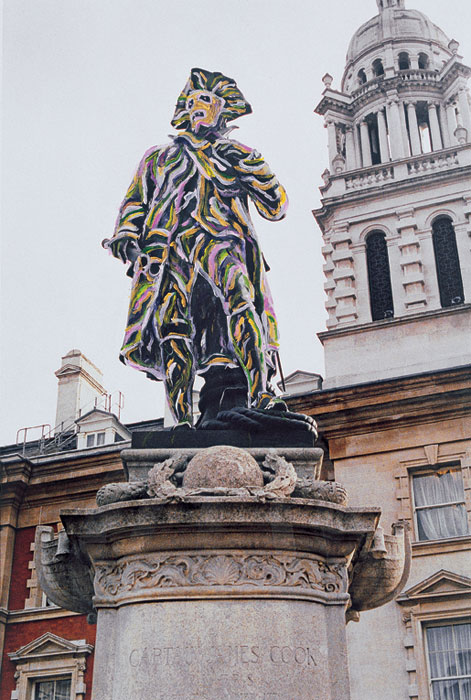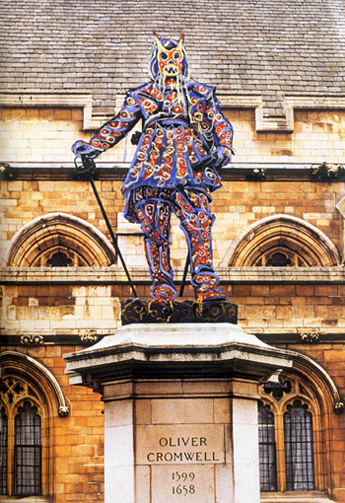| Homepage | ||
| Contact | ||
| CV & Links | ||
| Shop | ||
| Artwork by year :- | Artwork by theme :- | |
| 2020 - 22 | About Statues | |
| 2019 | Architecture | |
| 2018 | Boats | |
| 2017 | Cardboard | |
| 2016 | Coats of Arms | |
| 2015 | Finance & Trade | |
| 2014 | Public Artwork | |
| 2013 | Royalty | |
| 2012 | Soldiers | |
| 2011 | Treasury | |
| 2010 | ||
| 2005 - 2009 | ||
| 2000 - 2004 | ||
| 1992 - 1999 |
| HEW LOCKE | ||||
|
Captain Cook, 2005, 51 x 41cm |
||||
"It started as a proposal to get a statue-dressing project off the ground in London. Nobody was willing to take this project up, so the 'impossible proposals' - the painted photographs - became the artwork. "These works are a kind of ‘mindful vandalism’ I do think carefully about which statues I’m working with. For example any army general is for me fair game. But several times I’ve walked by a statue such as the Emily Pankhurst memorial, and I think ‘what can I do with that?’ She doesn’t have a history of any dubiousness at all - I had better leave her in peace. Or even Florence Nightingale, I don’t quite see the point of doing a proposed reworking of a Florence Nightingale statue, since it doesn’t have the same kind of complicated history, shall we say, as some of the other figures. I mean General Gordon, for instance, you know! I have to have a moral justification as to why I’m working with these images. I can’t just go in and paint over an image for the sake of it. "The colour is vital because for me it’s about reinvigorating these sculptures and putting across an idea that they could be brightly painted. This also hints at a constant concern of mine: namely addressing the idea that sculpture, particularly in monumental sculpture, in the West is still shaped by the fact that all the colour came off the Greek statues. If all the Greek statues had maintained their colour then we’d have a completely different view of what a monumental sculpture should look like, what colour it should be, and not this whole idea of the purity of marble or the elegant quality of the bronze. I could go back as well to cathedrals in Britain, in medieval times particularly, when the statues were brightly painted." - Edited extract of Hew Locke in conversation with Dr. Jon Wood of the Henry Moore Institute, from Drawing on Sculpture – Graphic Interventions on the Photographic Surface, Sculpture Journal volume 15.2, 2006.
left; Lionheart, right; Oliver Cromwell, both 2005, 51 x 41cm |


